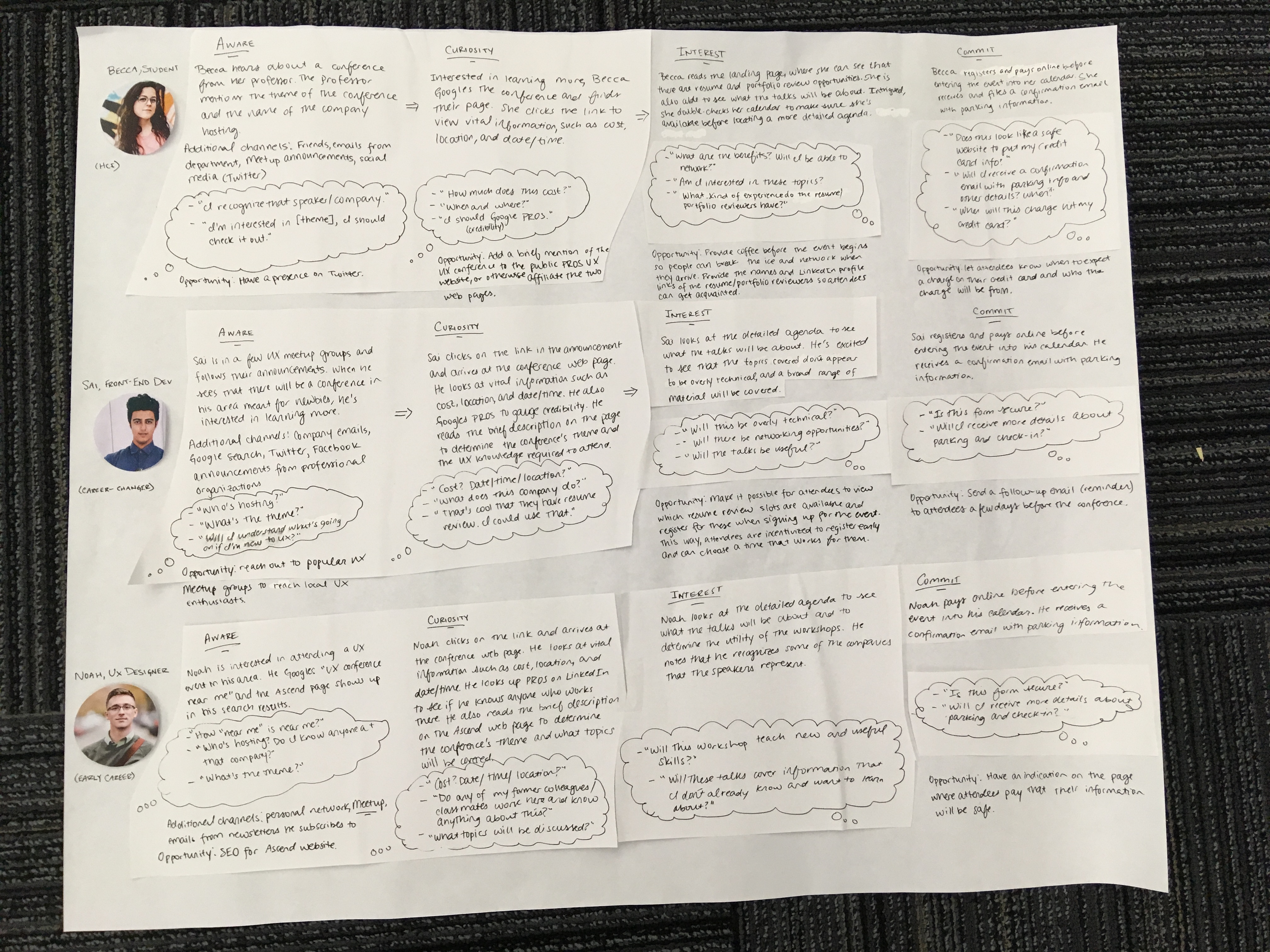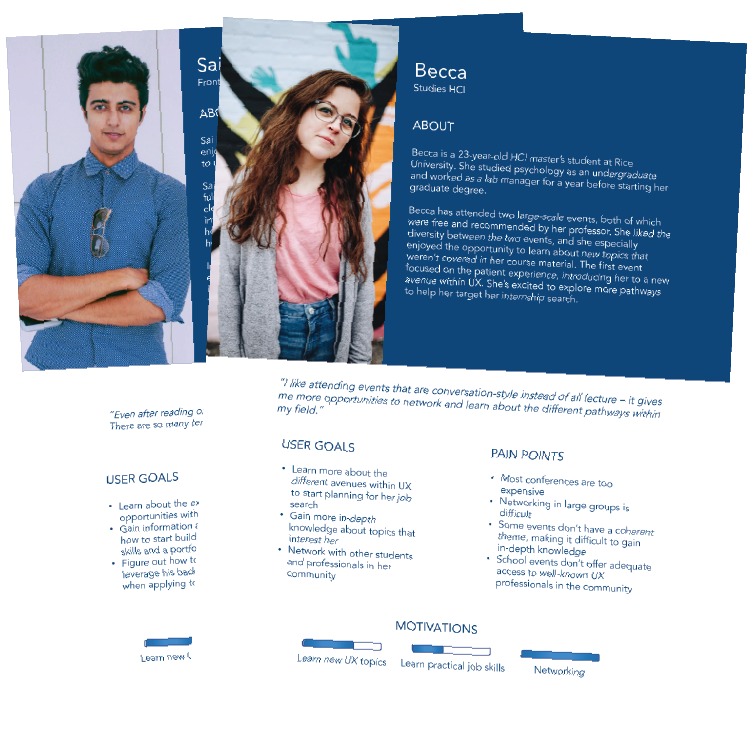Overview
Problem: Houston does not currently have a strong UX presence. PROS wanted to increase UX visibility in the community by hosting a conference geared toward UX newbies. This was the first conference that PROS had ever hosted, and they were looking to make the experience as streamlined as possible for attendees.
Solution: Conduct research into the conference attendee experience and learn about the type of content that piques the interest of target audience.
Duration: Independent project lasting ~6 weeks during internship.
Role: Researcher.
Interviews
What matters to conference attendees?
To gain some background information about potential attendees, I conducted 11 semi-structured interviews with students, early-career professionals, and career-changers. I asked them about previous conferences they had attended, their opinions about things that they would like to see improved, and what topics interested them most. After completing interviews, I looked for common themes across my notes.

Personas
Once I had conducted interviews, I had enough information to construct personas to inform my recommendations. I created three personas, one for each target audience segment.
The personas emphasized the differences in priorities between the different groups who might attend the UX conference. Students were interested in learning about cutting-edge industries, such as autonomous vehicles and voice technology. Career-changers and non-UX professionals wanted a more broad introduction to the field, explaining that it's difficult to figure out how to get started in UX solely based on Internet searches. Early-career professionals, on the other hand, were most interested in learning about new techniques in the field and gaining hands-on experience through workshops.
In spite of the differences in interests and priorities, all audience segments placed a high value on workshops and participation during conferences. As I moved into creating a journey map, I kept each group's unique needs in mind.
Journey Map
What matters to conference attendees?
Based on the personas that I had created, I started creating a journey map of what people are thinking about when they decide that they would like to attend a conference. I began with a basic outline based on the responses I had received from my interviewees. From there, I drew separate paths for each target audience segment. While the basic journey was the same across interviewees, students were much more likely to think about networking opportunities than early-career professionals. This group was also most likely to be price-sensitive, pointing out that we would need to prominently call out student discount options within our marketing messages.

Results
After gathering information about the conference attendee experience, I presented my findings and recommendations to the greater team. Based on my recommendations, the team updated the marketing plan to include a greater Twitter presence, scheduled a happy hour for after the conference to provide more networking opportunities, and increased the amount of hands-on opportunities and discussion for participants. Pictured are a few of the slides from my presentation.






